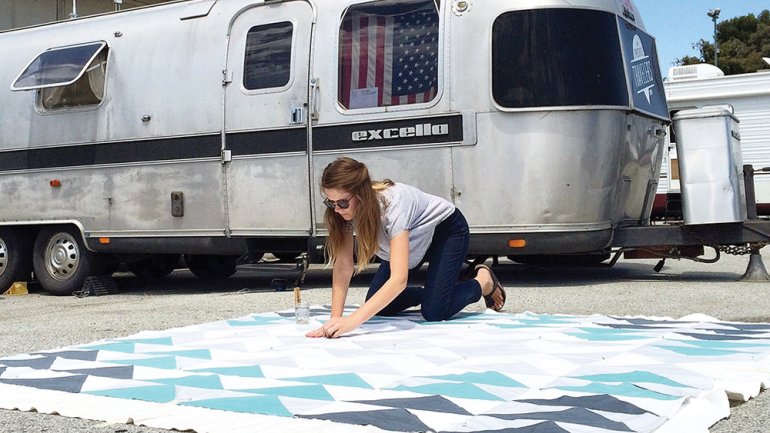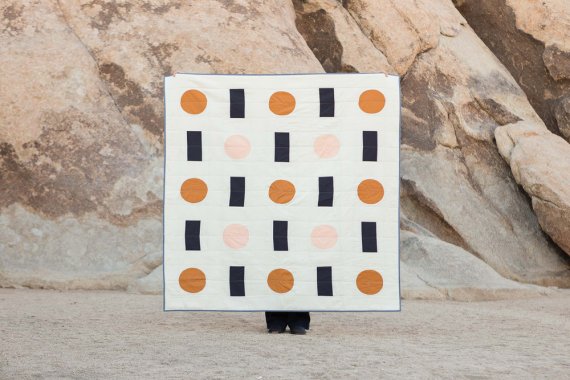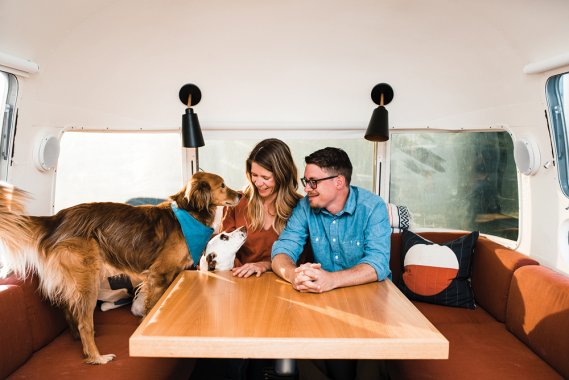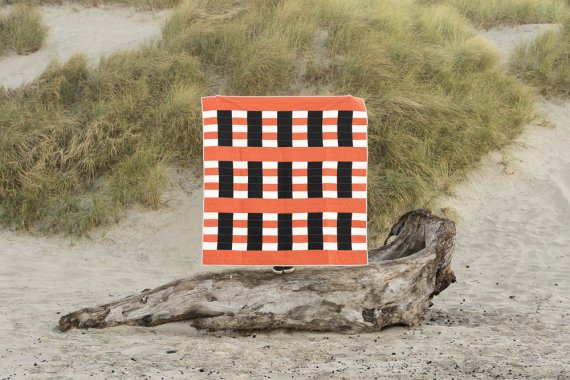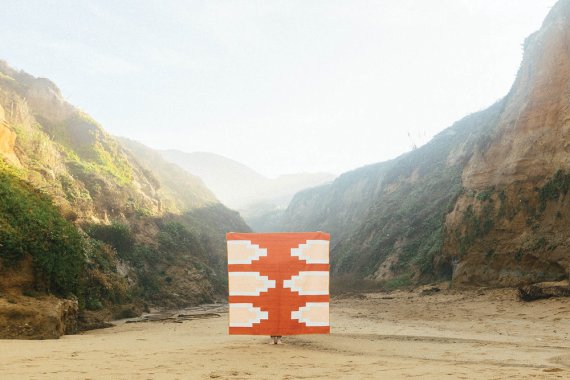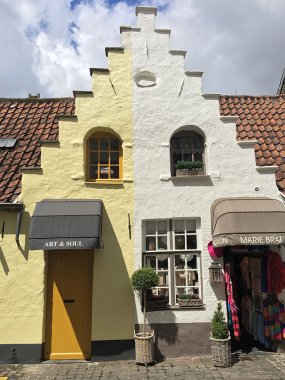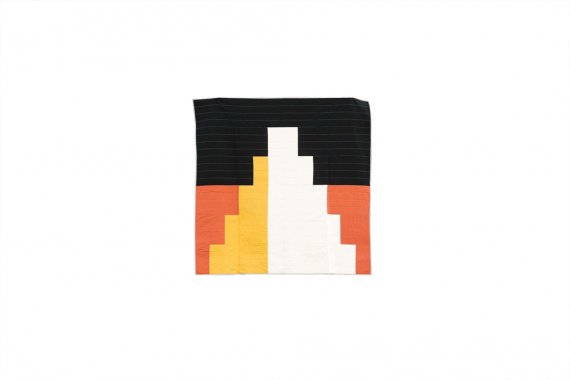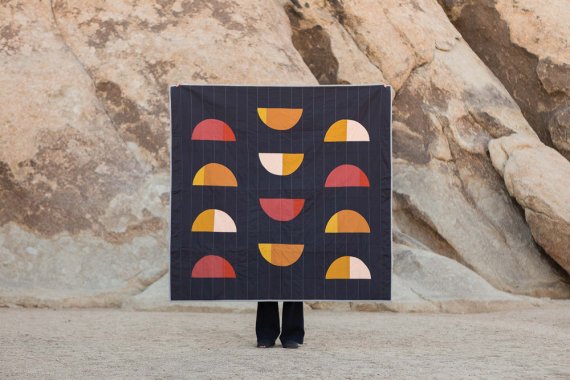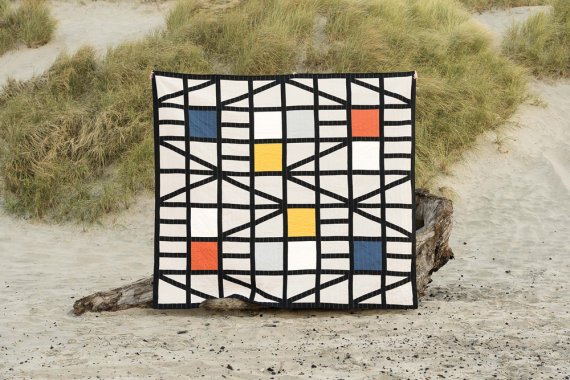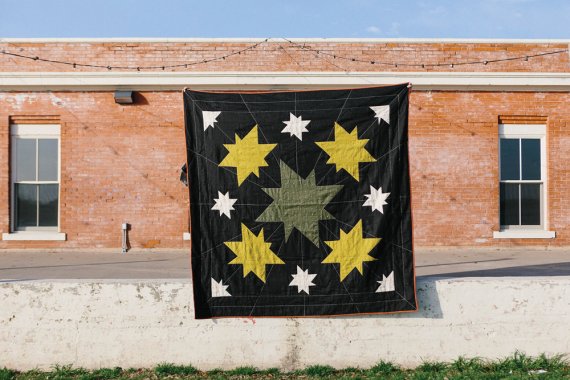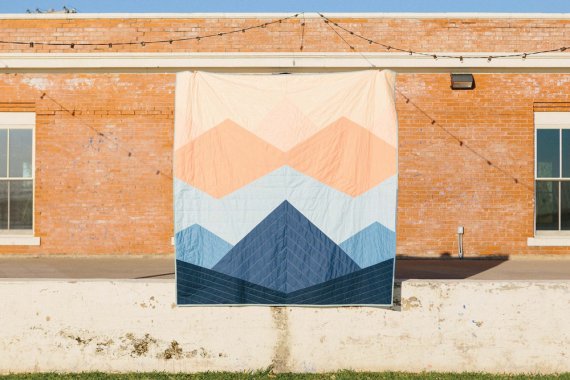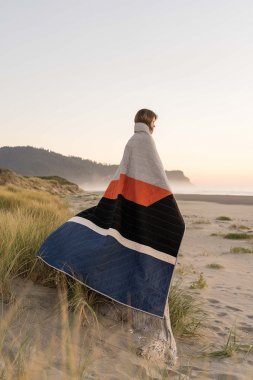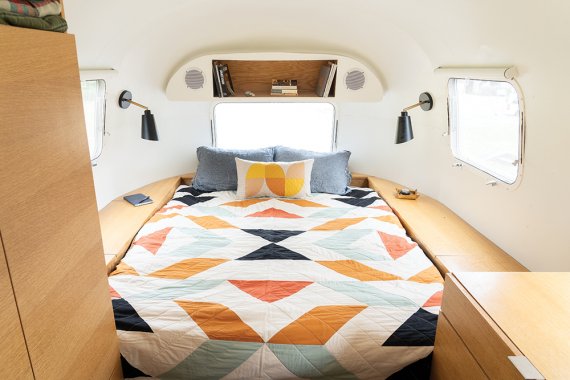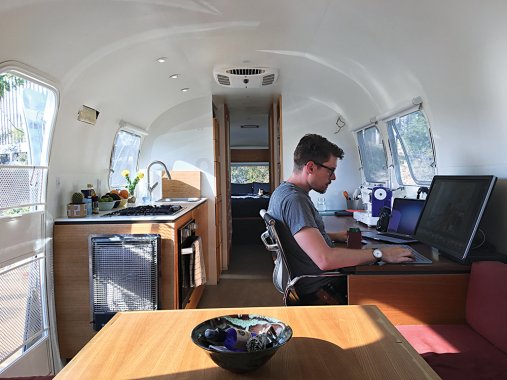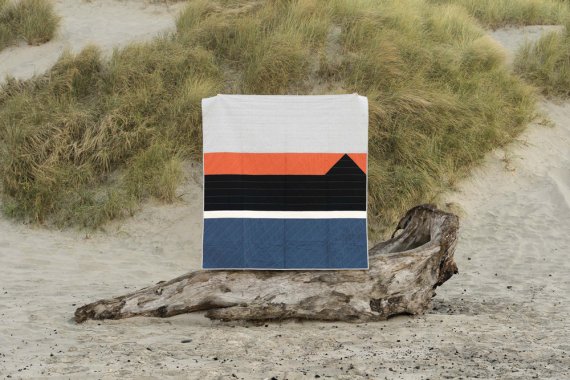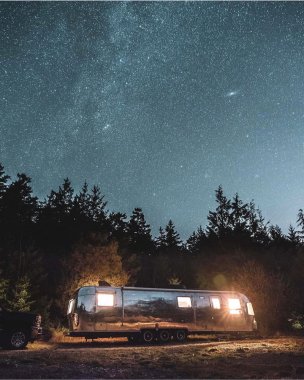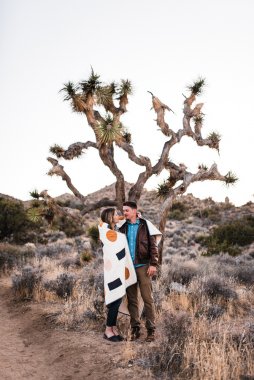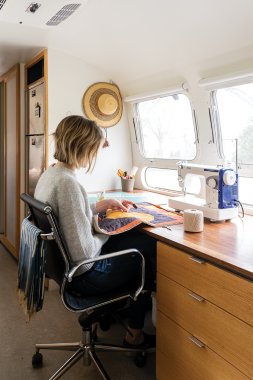Roadtripper
Roadtripper
Making a king-size quilt in a 200-square-foot RV might sound like a crazy idea. That’s not a lot of space to pin, baste, stitch, and iron something measuring about 8 x 7 feet, not to mention store materials. Yet several popular Facebook groups and YouTube channels dedicated to the craft prove otherwise. For many, quilting on the road is a passion.
Laura Preston, 31, has taken that passion to the next level. She has been running her business, Vacilando Quilting Co., from the renovated Airstream that has also been her home. The name, a Spanish word that has no direct English translation, was inspired by a quote from John Steinbeck’s Travels with Charley that speaks to her nomadic ethos: “If one is vacilando, he is going somewhere but does not greatly care whether or not he gets there ...”
It all started in 2013, when Preston and her boyfriend, John Ellis, exchanged their small Brooklyn apartment for his mother’s old Airstream, wanting to spend more time in nature. It was supposed to be a one-year adventure, “but after six months we were like, ‘Why would we stop?’ ” Preston, 33, recalls. “We had so much more to see.” Over two years, they visited 39 states while working remotely, Preston as a personal and administrative assistant, Ellis as a web developer.
Looking for a creative outlet that could travel with her, Preston started designing and making quilts inspired by the landscapes in her travels. As her skills improved, so did her dedication to the craft.
What seemed like a bad break gave her the opportunity of a lifetime: She was laid off from her day job. “It felt like the right time to jump in with both feet,” she says. She founded Vacilando Quilting in 2014 and has devoted herself to the business full time ever since.
Soon after, she and Ellis bought an already-gutted Airstream that they custom designed and refurbished from scratch, with workspace set aside for Preston’s business. The couple recently got married and purchased a home in Austin, Texas, setting aside the nomadic life at least in part. But they’ll be traveling this fall on a cross-country tour to promote Preston’s book, Simple Geometric Quilting, set for release at the end of August.
It takes a certain type of person to piece, baste, stitch, and bind alone for hours on end – and a very special type of person to do it all traveling in an Airstream. How did you become an RV quilter?
My parents have both been travelers. After they got married, they spent six months driving around in a Volkswagen bus. My mom is Belgian, and her whole family is still over there. We would visit there maybe once a year. So I’ve always had that traveling spirit. It definitely runs in the family.
I discovered quilting in 2013 when I was trying to find a creative outlet. I came across really interesting work by modern quilters and thought I might as well give that a try. It had to be something that wouldn’t take up a lot of space, because living in 200 square feet, everything has to have a practical purpose. So I bought some fabric. I didn’t have a sewing machine at the time, so I hand-pieced everything, which took forever. Immediately after, I was like, “I need to do another one.” Every time I finished one, I would start a new one. I fell in love with it and have been making quilts ever since.
When you left Brooklyn, did you ever imagine you’d end up traveling around the country running a quilting business?
Oh my gosh, no. If you had told me five years ago that I would be making a living making quilts, I would have said you’re crazy. My mom taught me how to use the sewing machine when I was young, but I was never really very good at it. I would not have pictured myself living in an Airstream at the ripe old age of 33.
How do your travels influence your quilts?
That’s my whole philosophy. The Topa quilts resemble a mountain range at dusk. They were inspired by the Topatopa Mountains outside of Ojai, California. Sunsets create a pink light on the mountains, which is the most beautiful thing you’ve ever seen. Those gradients of blues and pinks – and how the light creates those different tones – really influenced that design.
Another one is the Angel’s Landing quilt. We were driving through Weatherford, Texas, and we came to a stoplight. Either their city hall or their courthouse building had these doors with window cutouts that were super-simple but a little bit more ornate than your average door. That arrangement of shapes stuck in my mind. I took the colors I saw at Angel’s Landing in [Utah’s] Zion National Park to make it.
Recently, I went to the Clyfford Still Museum in Denver. His shapes and hues of color are really inspiring to me. I haven’t quite figured out how I can make a quilt inspired by his work, but it’s percolating.
When I look at quilter groups on Facebook, I’m surprised by how much equipment and materials people have. You, on the other hand, likely only have room for the essentials.
Space has always been a struggle. On Facebook, they’re always comparing their fabric stashes, and I just don’t have space for that. But all you really need is a sewing machine, a cutting mat, a ruler, an iron, and an ironing board. It’s amazing how creative you can get. I basted quilts on picnic tables and in parking lots. With any hobby, you can get all the gadgets and have a huge space, but I don’t think that that makes you better at it; it’s just more stuff.
In our last RV, my worktable was maybe 30 by 36 inches, which is only enough room for either a sewing machine or a cutting mat. At the end of the day, I would have to put everything away because that was where we ate dinner. In our new Airstream, we have a long desk. My new workspace is about 14 inches longer, with an additional table that’s 34 by 34 inches. I told my husband the under-the-bed space is going to be for my quilting supplies, so I can put it all away at the end of the day, and we can actually have a house that is not my studio.
Did you sew any items for your Airstream?
It’s funny. We still have the second quilt I ever made. But with two dogs and a cat, it’s kind of gotten destroyed. John’s always asking me, “So when are you going to make us some quilts?” I’ve done the upholstery for our lounge area, aprons, all kinds of fun stuff.
What’s the craziest thing that’s ever happened to you on the road?
Oh gosh. One time we were driving down the highway in South Dakota and it was really windy. All of a sudden, John looks back and he’s like, “Oh s—! Our awning flew off!” The 20-foot metal pole that the fabric wraps around had just flown off. We found out that highway is called Awning Alley because so many RVs get their awnings ripped off because it’s so windy. That’s a dangerous place to drive, and an expensive repair to make.
There are a number of inspiring modern quiltmakers. Who are your heroines?
When I first started, it was Maura Grace Ambrose of Folk Fibers. Her style is really traditional, but she naturally dyes all of her fabric. Then Meg Callahan – she uses maybe two colors and her quilts are very detailed in a very simple way. I also really admire the more conceptual quilters who make art quilts. Traditional quilting is beautiful, but when you can turn a quilt into art, there’s something really impressive about that.
What do you say to people who think quilting is only a pastime for retirees?
When I say, “I make quilts,” people think it’s a cute hobby because, until not too long ago, quilting was something that moms or grandmas do, something you do on the side and give to friends and family. But there’s a good handful of people in their 20s and 30s and 40s who are doing quilting that looks like art. It’s been with the modern quilting movement that people have started to see the value of them. Explaining to people that I sell quilts as my business and that it is successful is challenging their ideas about what a quilt is. This is exciting to me because it’s not just nine patch blocks; it’s not using flowery printed fabric. It can be something that you would want to have on your couch and not just stuffed away in a closet because it feels old-fashioned.
What are the challenges of running a creative business?
I’ve never run a business before, so I had to learn to do everything. Just trying to figure out how to make enough money but not sell for such a high price that no one will buy. In an ideal world, I would make quilts that are accessible to everyone, but I just haven’t figured out a way to do that without outsourcing it somewhere overseas. Trying to figure out if I want to be a quilter who is an artist or a quilter who produces quilts as products has been a struggle. I want to do both. I want it to be a product that everyone has in their homes and that’s affordable. But to do that, you have to think about trends and home décor, and it loses some of its soul. The alternative is making quilts as an art and spending 50 to 100 hours on each quilt and charging thousands of dollars. I’m trying to find the balance.


